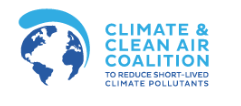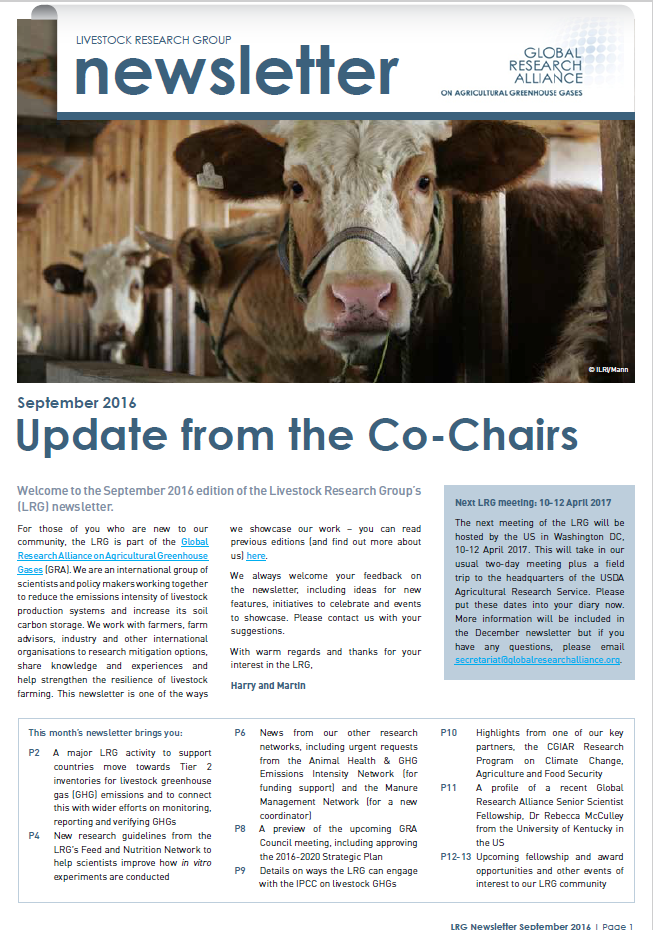Announcement of a Joint Call on “Novel technologies, solutions and systems to reduce the greenhouse gas emissions in animal production systems”.
The Joint Call is a partnership between three European ERA-NET research initiatives on Sustainable Animal Production (SusAn), Monitoring and Mitigation of Greenhouse Gases from Agriculture and Silviculture (ERA-GAS) and Information and Communication Technologies and Robotics for Sustainable Agriculture (ICT-AGRI).
The Joint Call is supported by research partners from 24 countries, including from outside of Europe, participating countries are: Belgium, Chile, Denmark, Estonia, Finland, France, Germany, Greece, Ireland, Italy, Latvia, Lithuania, The Netherlands, New Zealand, Norway, Poland, Romania, Slovakia, Spain, Sweden, Turkey, UK and Uruguay.
The overall objective of the 2018 Joint Call is to contribute to the development of novel technologies, solutions and systems to reduce the GHG intensity of animal production systems (excluding aquaculture or fur animals) in Europe and beyond. This funding initiative calls for applied research. The projects’ potential impact should be relevant for the mitigation of GHG emissions within the coming 5 – 10 years. Deadline for proposal submission: 3rd December 2018
The call announcement and link to the online submission tool can be found on the FACCE-JPI website.
In a recent study, the yearly nutritional and greenhouse gas (GHG) emissions impacts of eliminating animals from United States agriculture were quantified. Modelling estimated that agricultural GHG emissions would decrease by 28%, but that the resulting nutritional profile of a plant-based diet would be inadequate for US citizens.
New research by the New Zealand Agricultural Greenhouse Gas Research Centre (NZAGRC)’s Dr Andy Reisinger and Dr Harry Clark shows that the livestock contribution to global warming is significantly greater than previous estimates.
Previous estimates were based on CO2-equivalent emissions, but Dr Reisinger explains that methane plays a critical role in global warming: “We found that of the warming the world had experienced by 2010, as much as 19 percent was due to direct historical methane and nitrous oxide emissions from livestock. Once you add the warming due to emissions when land is converted into pastures, you end up with a total contribution of 23 percent to current warming… [not including] indirect emissions from energy use or growing livestock feed such as soy beans…”
Dr Reisinger says the study also addresses how much livestock will contribute to future warming under different scenarios and how reductions in livestock emissions would impact on allowable CO2 emissions as set out in the 2016 Paris Agreement.
Read the full article here, published in Global Change Biology
For further questions, please contact Dr Andy Reisinger, [email protected]
The Global Research Alliance’s Livestock Research Group has published a new case study on beef production in Canada. The study discovered that Canada produced 32% more beef in 2011 than in 1981, mostly due to higher carcass weights. This was done with 29% less breeding stock, 27% fewer slaughter cattle and 24% less land, and with a 14% reduction in greenhouse gas emissions intensity.
The Livestock Research Group is documenting countries’ successes in reducing on-farm emissions intensity and increasing productivity and resource use efficiency (or reducing other externalities) of livestock systems. The case studies showcase the diversity of approaches being employed across different livestock systems and scales (local, state and national).
Read the other case studies (scroll down to ‘Success stories in reducing emissions intensity’)
The latest version of the GRA’s Livestock Research Group newsletter is now available.
This edition has articles on:
* Our work with countries in South and South East Asia to support their development of livestock GHG inventories
* New research guidelines from our Feed and Nutrition Network on conducting in vitro experiments
* A preview of the upcoming GRA Council meeting
* Engagement with the IPCC on livestock GHG issues
* Highlights from CCAFS (the CGIAR’s Research Program on Climate Change, Agriculture and Food Security), one of our major partners
Download the newsletter here
The college of Agricultural and Environmental Science, UC Davis has posted an interesting article on “Facts and Fiction on Livestock and Climate Change” by Frank Mitloehner, Professor UC Davis.
Professor Mitloehner shows the proportion of US total GHG emissions from livestock production (4.2%) in comparison with emissions from other sectors. Suggesting that a direct comparison between emissions from the US livestock sector and the energy (31%) and transport sectors (27%) brings into perspective the amount of difference that can be made by reducing livestock emissions.
Of course that is not to suggest that the livestock sector is not required to play its part in reducing emissions. The article shares impressive statistics from the US beef and dairy sectors showing how production from both sectors has increased over the last 50-65 years, although the total number of livestock has decreased.
Dairy:
- 1950: 22 million dairy cows produced 117 million tons milk
- 2015: 9 million dairy cows produced 209 million tons of milk. (Fifty-nine percent fewer cows produced 79 percent more milk than they did in 1950.)
Beef:
- 1970: 140 million head of cattle produced 24 million tons of beef
- 2015: 90 million (36 percent fewer) head of cattle produce 24 million tons of beef
The full article can be read on the UC Davis website.
For information on some of the management practices that the US are using to continue reducing emissions from their dairy sector in particular see the case studies developed by the Livestock Research Group.
The Livestock Research Group has developed a set of country case studies demonstrating on-farm successes to reduce on-farm emissions from livestock production. The case studies demonstrate an increase in production and increase of resource use efficiency as well as a reduction in greenhouse gases. Six countries, Chile, Indonesia, Ireland, the Netherlands, New Zealand and USA have contributed success stories covering a range of livestock systems (beef, dairy and sheep) across different scales (local, state and national).
Each case study outlines the key management activities and the effect of these actions on productivity, income and food security, while also considering the trade-off implications and how this relates to climate change adaptation for this livestock system. The Livestock Research Group are continuing to build this library of on-farm examples as a useful resource that can be shared and provide a basis for research and uptake of similar activities in other countries. Visit the Livestock Research Group page to read the case studies. For more information on any of the case studies, or to share a similar story from your own research contact [email protected].
The Climate & Clean Air Coalition (CCAC) Agriculture Initiative has released a report on the current challenges of livestock methane emissions management, and offers actionable solutions. The report follows on from a study of 34 countries across Asia, Africa and Latin America, and an in-depth assessment of six of these countries. It identifies and addresses four main problems: lack of awareness, lack of knowledge, low access to incentives, and ineffective policies/legislation. See here for the media release, or read the report.
Five animal-safe compounds have been identified as being able to reduce methane emissions in livestock by up to 90%. The discovery was made after more than 100,000 compounds were tested by researchers working through the New Zealand Agricultural Greenhouse Gas Research Centre and Pastoral Greenhouse Gas Research Consortium. Further trials are needed, but the search is already under way for a commercial partner to translate the findings a usable product.
The finding is part of the research made possible through New Zealand’s increased government and farmer funding into agricultural greenhouse gas mitigation. Collaboration on the project with international scientists has been made possible through New Zealand Government funding of the Global Research Alliance. Read the NZAGRC media release and related news release.



